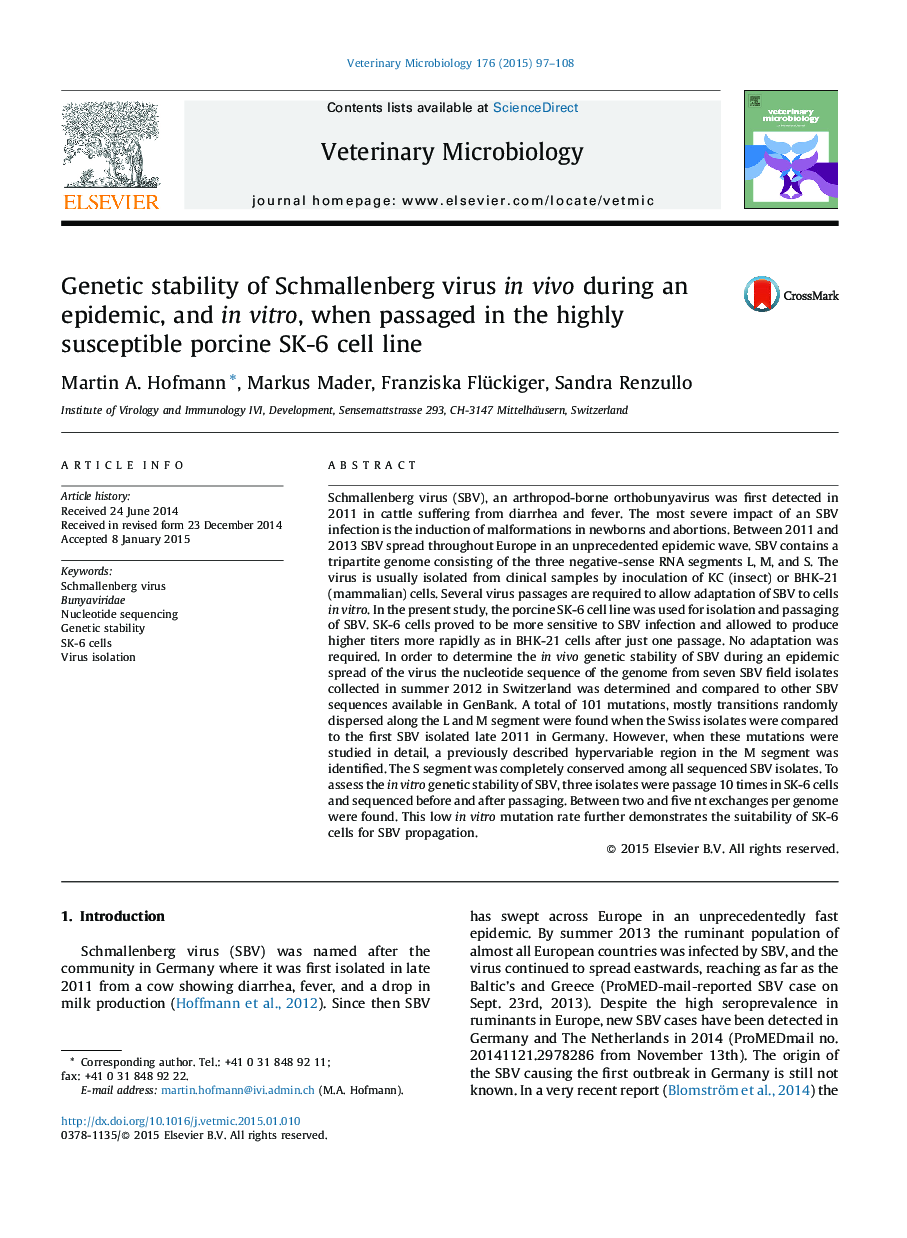| کد مقاله | کد نشریه | سال انتشار | مقاله انگلیسی | نسخه تمام متن |
|---|---|---|---|---|
| 5800106 | 1555353 | 2015 | 12 صفحه PDF | دانلود رایگان |

- Porcine SK-6 cells are more highly suitable for Schmallenberg virus isolation than BHK-21 cells.
- A total of 101 point mutations were detected among the 7 Swiss SBV genomes.
- Schmallenberg virus remains genetically stable during an epidemic.
- The viral genome remains stable upon 10-fold serial passaging in SK-6 cells.
- Since Schmallenberg virus is an RNA virus, the high genetic stability was unexpected.
Schmallenberg virus (SBV), an arthropod-borne orthobunyavirus was first detected in 2011 in cattle suffering from diarrhea and fever. The most severe impact of an SBV infection is the induction of malformations in newborns and abortions. Between 2011 and 2013 SBV spread throughout Europe in an unprecedented epidemic wave. SBV contains a tripartite genome consisting of the three negative-sense RNA segments L, M, and S. The virus is usually isolated from clinical samples by inoculation of KC (insect) or BHK-21 (mammalian) cells. Several virus passages are required to allow adaptation of SBV to cells in vitro. In the present study, the porcine SK-6 cell line was used for isolation and passaging of SBV. SK-6 cells proved to be more sensitive to SBV infection and allowed to produce higher titers more rapidly as in BHK-21 cells after just one passage. No adaptation was required. In order to determine the in vivo genetic stability of SBV during an epidemic spread of the virus the nucleotide sequence of the genome from seven SBV field isolates collected in summer 2012 in Switzerland was determined and compared to other SBV sequences available in GenBank. A total of 101 mutations, mostly transitions randomly dispersed along the L and M segment were found when the Swiss isolates were compared to the first SBV isolated late 2011 in Germany. However, when these mutations were studied in detail, a previously described hypervariable region in the M segment was identified. The S segment was completely conserved among all sequenced SBV isolates. To assess the in vitro genetic stability of SBV, three isolates were passage 10 times in SK-6 cells and sequenced before and after passaging. Between two and five nt exchanges per genome were found. This low in vitro mutation rate further demonstrates the suitability of SK-6 cells for SBV propagation.
Journal: Veterinary Microbiology - Volume 176, Issues 1â2, 23 March 2015, Pages 97-108